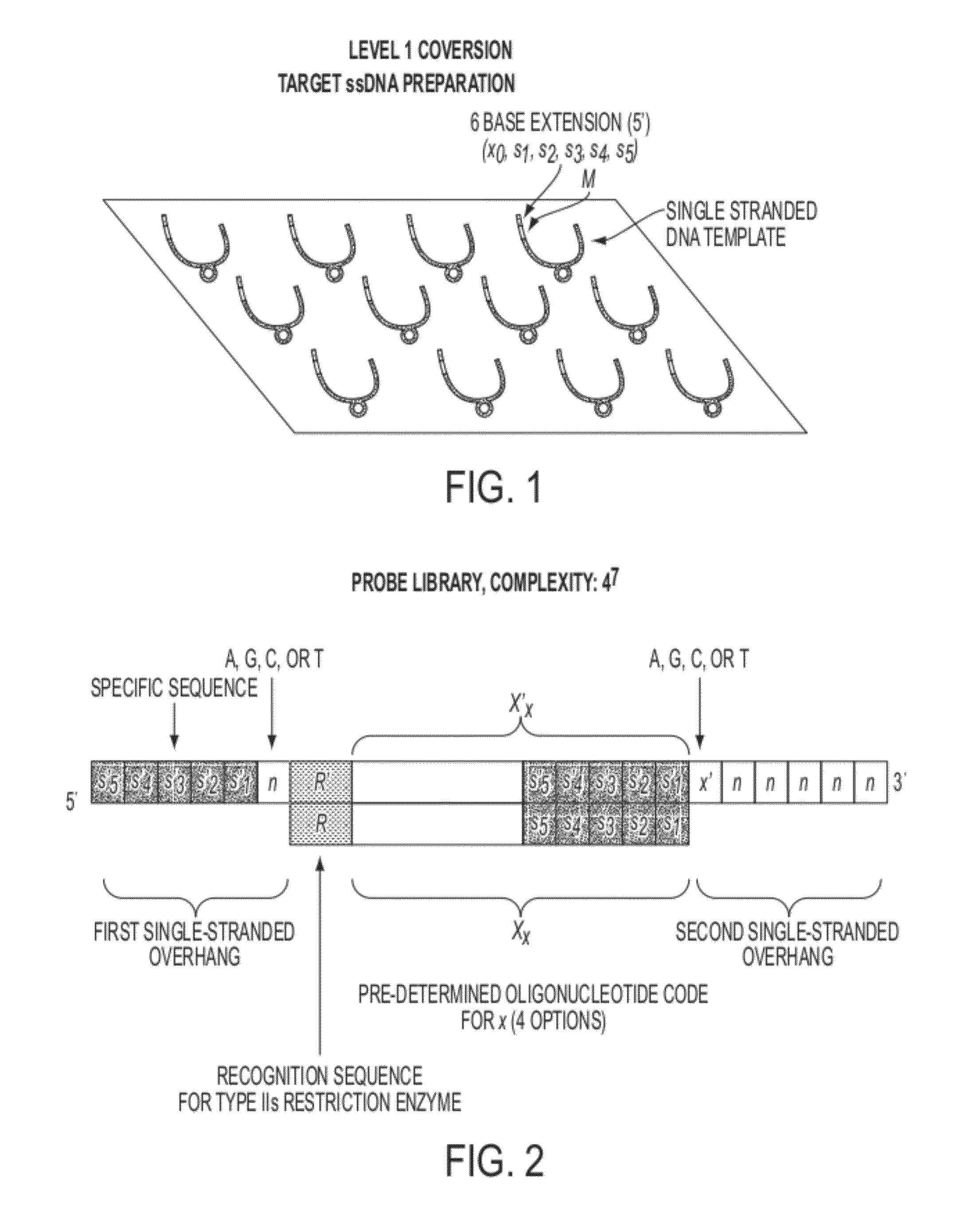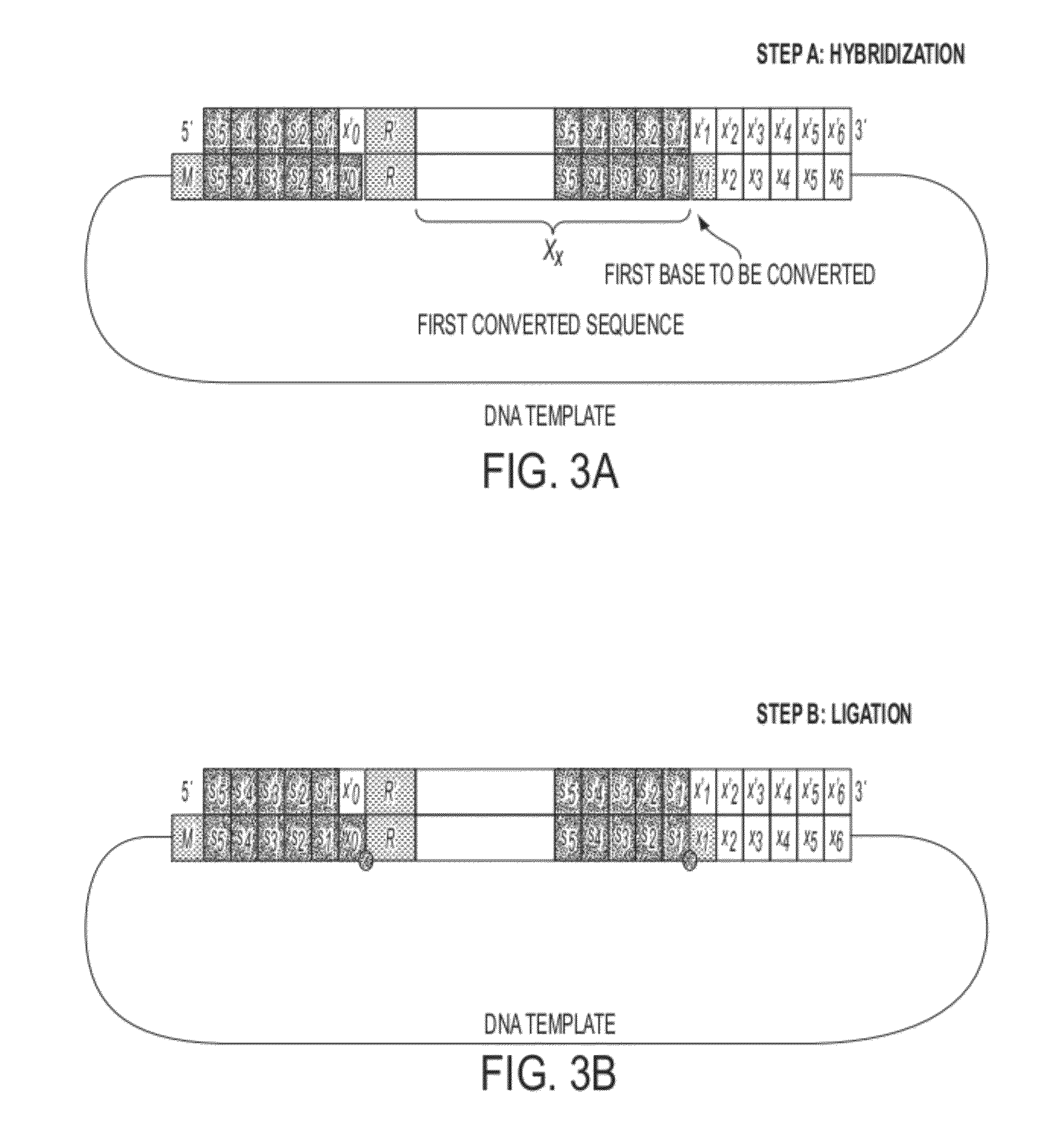Sequence preserved DNA conversion
a technology of dna and sequence, applied in the field of sequence preserved dna, can solve the problems of deterioration of quality for the remainder of the sequence, nanopore sequencing techniques without single nucleotide resolution, and the minimal number of bases that can be resolved by a nanopore has not been firmly established, so as to eliminate the introduction of errors and high throughput
- Summary
- Abstract
- Description
- Claims
- Application Information
AI Technical Summary
Benefits of technology
Problems solved by technology
Method used
Image
Examples
example 1
Circular DNA Conversion (CDC): Conversion of a Target ssDNA Target Molecule Starting at it's 5′ End
[0249]In this example (1) we show one base conversion (cytosine) to two bits (0,1) using a 100 base long DNA template (2) we show that by using ‘inosine’ for surrogate base pairing in the probe library, the probe library is reduced by an order of magnitude without loss of accuracy or yield of conversion and (3) We show high yield for 1 base conversion without using surface immobilization of templates or any micro fluidics approaches. Since the methods described herein are fully compatible with lab-on-a-chip techniques, these methods will increase the yield and efficiency of conversion by many orders of magnitude.
[0250]CDC Principle: A three-step process was used to convert nucleotides of template DNA to its corresponding 2-bit sequences, as illustrated in FIG. 6. Initially the template DNA was modified by phosphorylation at 5′ end and ligation to a 6 base biotinylated oligo correspondi...
PUM
| Property | Measurement | Unit |
|---|---|---|
| Diameter | aaaaa | aaaaa |
| Length | aaaaa | aaaaa |
| Time | aaaaa | aaaaa |
Abstract
Description
Claims
Application Information
 Login to View More
Login to View More - R&D
- Intellectual Property
- Life Sciences
- Materials
- Tech Scout
- Unparalleled Data Quality
- Higher Quality Content
- 60% Fewer Hallucinations
Browse by: Latest US Patents, China's latest patents, Technical Efficacy Thesaurus, Application Domain, Technology Topic, Popular Technical Reports.
© 2025 PatSnap. All rights reserved.Legal|Privacy policy|Modern Slavery Act Transparency Statement|Sitemap|About US| Contact US: help@patsnap.com



